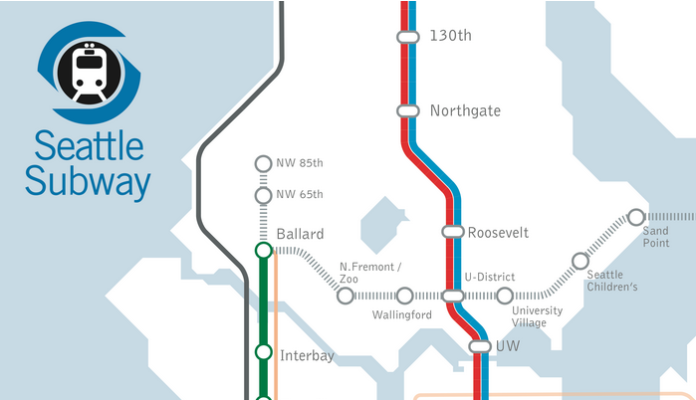Opponents of Sound Transit 3 (ST3) love to say that Seattle doesn’t get that many stations. To take a cue from Trump’s debating style: Wrong! One skeptic, state senator Reuven Carlyle, gets six new stations and one expanded station in his district alone. All told ST3 would bring Seattle ten new stations, four expanded stations, and two infill stations. It would also bring what could qualify for true bus rapid transit (BRT) to Seattle for the first time with the Madison BRT project that would better connect First Hill, Central District, and southeastern Capitol Hill.
Nonetheless, it’s true that some neighborhoods will not be reached by light rail improvements on their doorsteps. However, ST3 puts Sound Transit in a position to grow. The Ballard Station in particular invites an extension with many dense and growing neighborhoods nearby. Seattle Subway sensed the opportunity with its long-term maps which show two dashed lines from Ballard’s station.
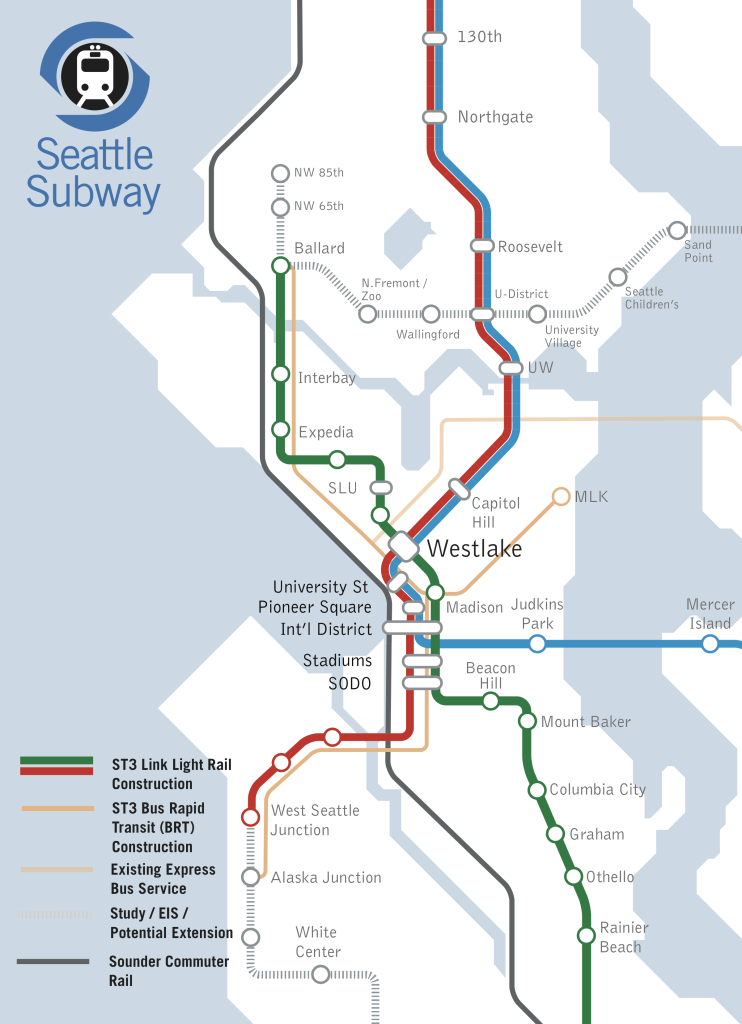
Which direction would make for the more convenient extension could depend on the Salmon Bay crossing–if it remains a movable bridge in this ecologically sensitive area or whether the environmental impact process pushes Sound Transit to use a tunnel crossing and thus an underground Ballard Station. With a movable bridge, elevated rail to Ballard High School and Crown Hill makes more sense. Elevated rail to UW through Fremont and Wallingford wasn’t studied, perhaps because the right-of-way is pretty narrow along 45th Street making such a plan obtrusive. 15th Ave NW and Holman Road, however, do have the benefit of width.
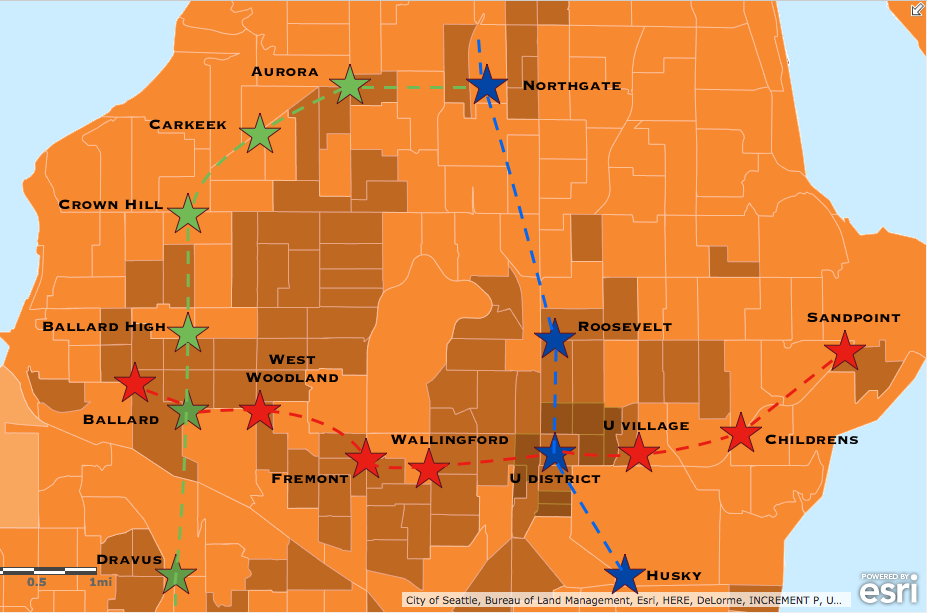
In 2015, Sound Transit studied extending elevated light rail to NW 65th St (near Ballard High School) and found that would cost between $351 million and $375 million. That isn’t peanuts, but, if Sound Transit was able to achieve some cost savings or secure larger grants than it thought, it seems conceivable the NW 65th St station could be added as part of ST3. Elevated rail to NW 85th St (Crown Hill) would seemingly add a similar cost, maybe slightly more for a mile of track versus the half-mile to Ballard High School.
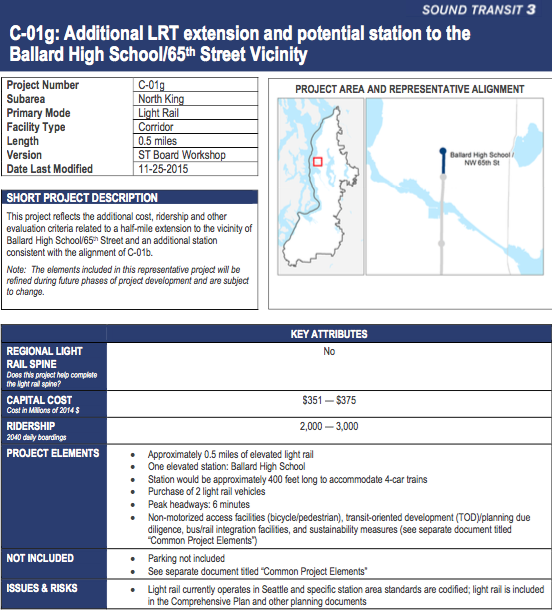
Sound Transit did study a Ballard-to-UW subway and found it would cost about $3 billion including an operations and maintenance facility. Now, if we got an underground Ballard Station and crossing, then we could make a turn to the east and continue on to the UW. The line would no longer require a separate operations and maintenance facility (since it would be an extension rather than a standalone line) and it would cover the cost of the Ballard station. That would mean savings which would cover the cost of adding another station at 8th Ave NW to cover East Ballard, West Woodland, and southern Phinney Ridge.
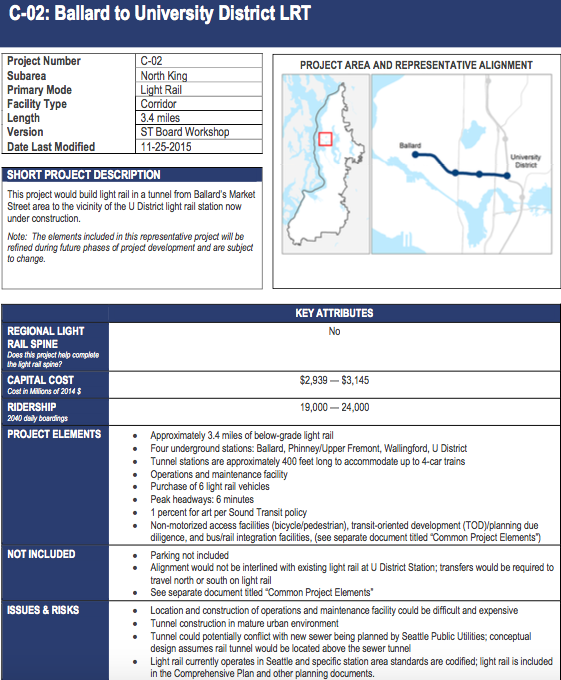
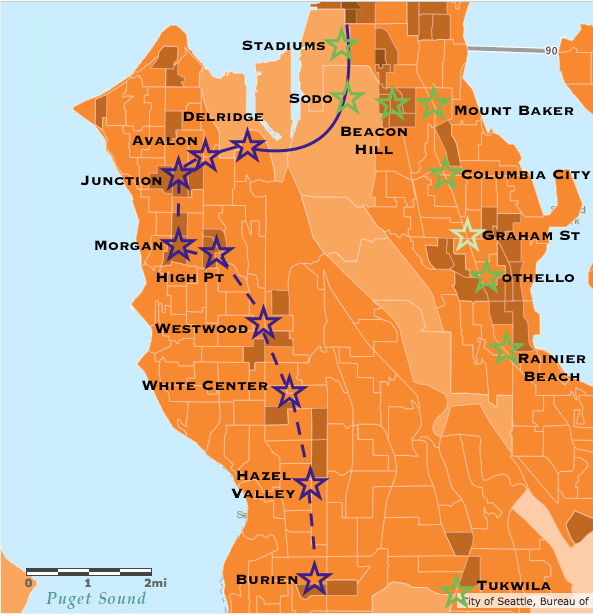
Sound Transit also studied extending elevated light rail from West Seattle Junction to Burien Transit Center along a jagged course. Its estimated cost would be between $2.7 billion and $2.9 billion for a projected ridership between 10,000 and 15,000. The train would cover the 9.1 miles in 22 minutes and take 12 minutes more to Downtown. The plan calls for six stations at Burien Transit Center, SW 128th St, White Center, Westwood Village, High Point, and Morgan Junction.
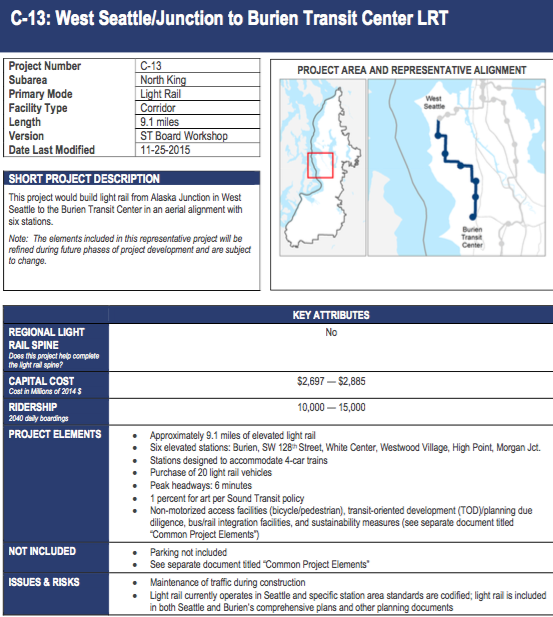
ST3 reaching Ballard and West Seattle Junction is a great first step. Some skeptics argue ST3 would be the last ballot initiative the region passes. However, with expansions to the enticing destinations of Fremont, Wallingford, and Crown Hill within reach from Ballard Station, an ST4 package seems inevitable and it’s remains largely a matter of what funds it. Perhaps King County or Seattle must go it alone but, one way or the other, Seattle voters are likely to want more light rail and vote to get it.
Filling out most of the Seattle Subway map above would appear to cost about $6 billion in 2014 dollars. That doesn’t seem so insurmountable.
- $800 million for Ballard to Crown Hill elevated light rail;
- $3 billion for Ballard to UW subway; and
- $2.8 billion for West Seattle to Burien elevated light rail.
So vote for Regional Proposition 1 to set our transit system on a trajectory to spread the benefits of high capacity transit to every corner of Seattle. And read our full endorsements here.
Doug Trumm is publisher of The Urbanist. An Urbanist writer since 2015, he dreams of pedestrian streets, bus lanes, and a mass-timber building spree to end our housing crisis. He graduated from the Evans School of Public Policy and Governance at the University of Washington in 2019. He lives in Seattle's Fremont neighborhood and loves to explore the city by foot and by bike.

